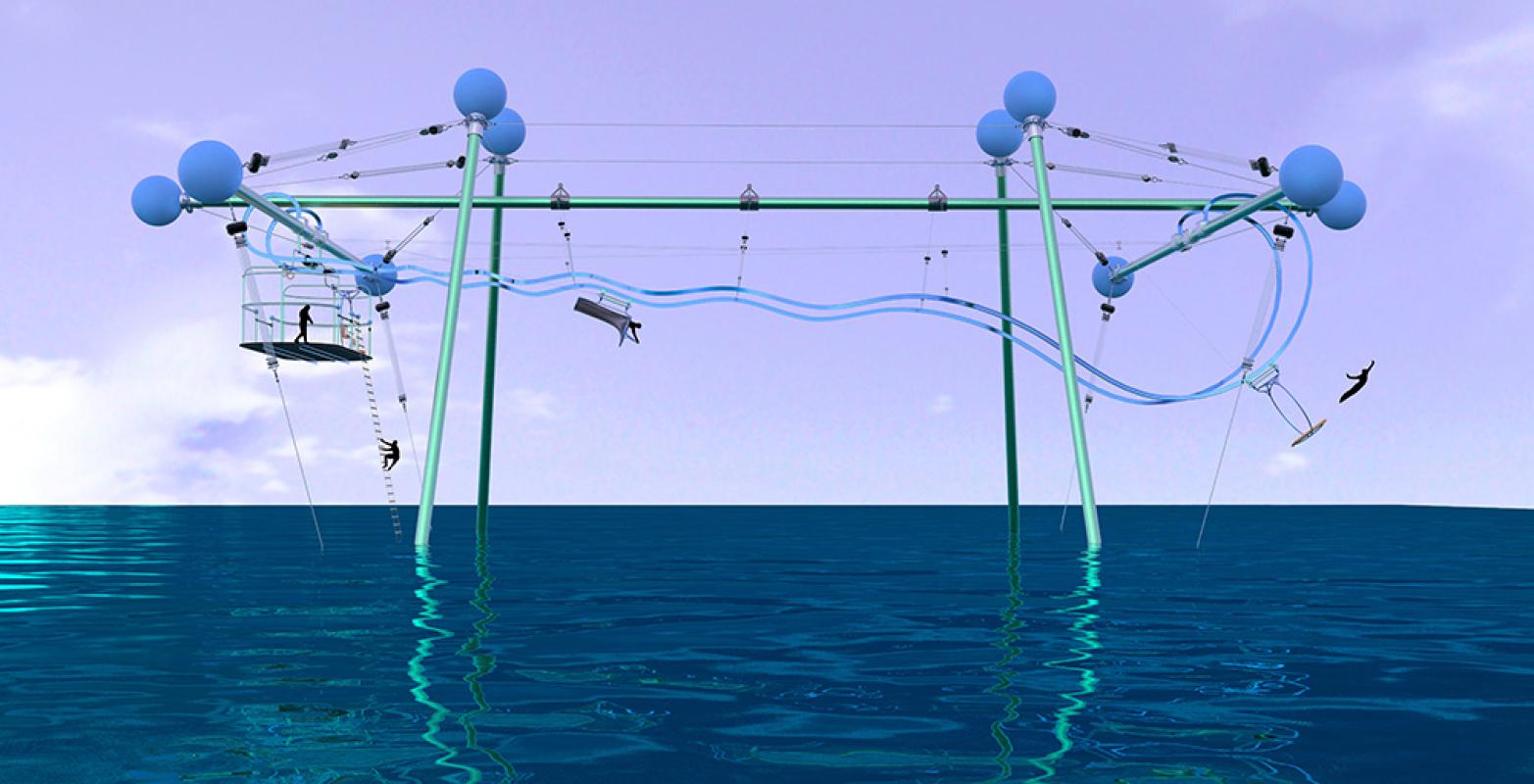2017 / Outdoor And Exercise Equipment
/ Sports/Toys/Games
/ Student
Wiggle Theory
The Wiggle is a novel means of human
locomotion. By way of play, it enchants users
into exertion. It is willingness, not force of will,
which leads to a life of fitness. Movement
refreshes, invigorates and rejuvenates not just
our bodies, but so, too, the mind. Moving in
new ways increases the myelination in neurons
- literally insulating our sanity and wit against
the throes of age. All this to say two things:
lassitude is lamentable and play is a way to
address it. Physical balance, in particular,
seems neglected. The Wiggle seeks to renew
our relationship to balance. While there are
many flavors of instability (e.g. tippy, slippy,
swingy, etc.), the most engrossing experiences
foster flow - a sense of connectivity and
continuity. In this vein, The Wiggle aspires to
be more melody than single note. It’s a
rhythmic seriesof hillsand swoopsen route to
an aerial crescendo. Thisclassof motion (what I
call wiggling) isabundant in both nature and
sport. To advance in x, fish wiggle in y, while
whales wiggle in z. Humans wiggle when we
swim butterfly, play with ripstiks, and, most of
all, pump rhythm sections on tracks of
pavement, dirt or snow. Satisfaction stems
from the ever-present acceleration in
undulation. In weaving this wave, we feel
constant change. Our grip on time is relaxed,
yet strong. From the design perspective, this
wiggle is achieved by traveling along a bent I-
beam. It’s like a human-scale roller coaster, a
3d zipline. By placing the activity over water,
falling isforgiven. Tensegrity suspendsthisgiant
track, able to do so asa lightweight, low-profile,
and low-cost structural language. Specifically,
seven compressive members are held in space
by twenty four tensile lines. Installation is
achieved by pulling at a single point, greatly
reducing the cost of erecting the
superstructure.
Photo Credit: Savannah College Of Art And Design










